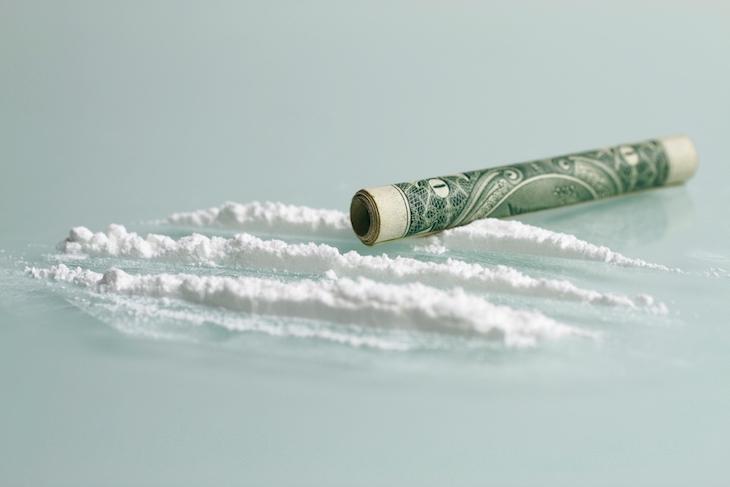Sullying the glorious sunshine, sand and sea, Miami in the 1940s, when I first ventured there, was already overcrowded, vulgar and exorbitant. It got a lot worse. By the early 1980s, the period to which this sensational criminal history is devoted, it had become the capital of Cubans in exile and America’s most prosperous cocaine entrepot, where the annual murder rate was more than 300. Attempts to impose law and order were handicapped by corrupt police, a corrupt judiciary and corrupt juries.
Over many years of intimate investigation of Miami at its nadir, Roben Farzad has succeeded in overcoming the formality of his Ivy League education (Princeton and Harvard) so uninhibitedly that he seems to have penetrated the minds, while discovering the habits, of the cocaine traffickers and users, and has adapted his prose style to the underworld patois of Little Havana. It is now too late for the Miami Chamber of Commerce to have Farzad assassinated; in his book Hotel Scarface, the truth about the place is out in all its luxurious squalor.
The quintessence of Miami’s industrial- scale narcotic hedonism was a hotel on Sailboat Bay, Coconut Grove. Owned by Barton Goldberg (whose father had established a New York hotel patronised by the Mafia), the headquarters of Florida’s cocaine cowboys was called the Mutiny. It was later nicknamed ‘Hotel Scarface’, in honour — if that’s the word — of Al Capone, the Chicago prohibition gangster who spent his last days of freedom in Miami before being imprisoned for tax evasion. When a film was made about another ‘Scarface’, his favourite fictitious habitat in Florida, the Babylon Hotel, was modelled on the Mutiny.
It was surrounded by a sub-tropical garden, with convenient access to moorings for yachts and powerboats able to reach Colombia, the principal source of cocaine. ‘Every room and suite is decorated with its own unduplicated exotic motif,’ Goldberg promised. Some schemes were
inspired by faraway locales, with names like the titles of novels, states of mind and flights of fancy, such as ‘Marrakesh,’ ‘Zarapata’s Retreat,’ ‘House of the Setting Sun,’ ‘Cloud 9’, ‘Lunar Dreams’ and ‘Fourth Dimension’.
‘A full-time staff of six works at decorating the Mutiny,’ he proclaimed; ‘two on elaborate arrangements of rare flowers — Peruvian lilies, birds-of-paradise and the like… Roman baths and mirrored ceilings are found in some rooms.’
The Mutiny was a club not open to the general public, and among its amenities were secure hiding places for stocks of drugs in transit. Hostesses and waitresses, in ‘fashionable gowns’ provided sexual services for cash or cocaine. Guests, who were carefully screened, were guaranteed a place to make confidential deals and to celebrate in afterwards. It was an exclusive hideaway for wealth creation and sybaritic orgies.
Cocaine acquired in Colombia at $1,000 a kilogram was worth $50,000 at the Mutiny, and even more when ‘cut’ and peddled on the streets beyond. ‘So much money was sloshing around Miami,’ Farzad writes, that the Mutiny was selling more bottles of Dom Perignon than any other establishment on the planet. This was according to the champagne’s distributor, whose executives visited in disbelief at the turn of the decade. They heard right: a suite at the hotel had been converted into a giant walk-in cooler; beautiful women adorned tabletop cascades of bubbly in stacks of flutes; dopers bought bottles for the house when their loads came in, and management often flew out the Mutiny’s private plane to procure even more from other cities. Farzad repeatedly cites champagne as a symbol of the utmost luxury. It apparently impresses him as much as it did the hotel’s habitués.
The guest list was richly varied. During the Mutiny’s heyday, it included Don Johnson, the star of the television drama series Miami Vice; Pablo Escobar, the Colombian drug-lord, whose fortune exceeded $30 billion before he was shot; and George Bush Snr, before he moved into the White House. With Bush at the hotel were his CIA assistants and some FBI agents, as well as assorted local police officers who were enjoying the ride. Escobar even got the Venezuelan Air Force to transport cocaine in bulk, 1,000 kilos a trip, from Colombia to Miami International Airport, with astonishing impunity.
When the soi-disant law-enforcement officers finally managed in 1995 to put together what was announced as ‘Miami’s trial of the century’, it was an embarrassing flop, as Farzad explains in a chapter entitled ‘The Best Justice that Money Can Buy’. The drug dealers were able to buy jury votes for $500,000 each. Money conquers all, at least temporarily.
Eventually, some of the crooks listed in the book’s cast of characters were jailed for long terms. But who knows how many survivors and successors still trade in cocaine in Florida today?






Comments